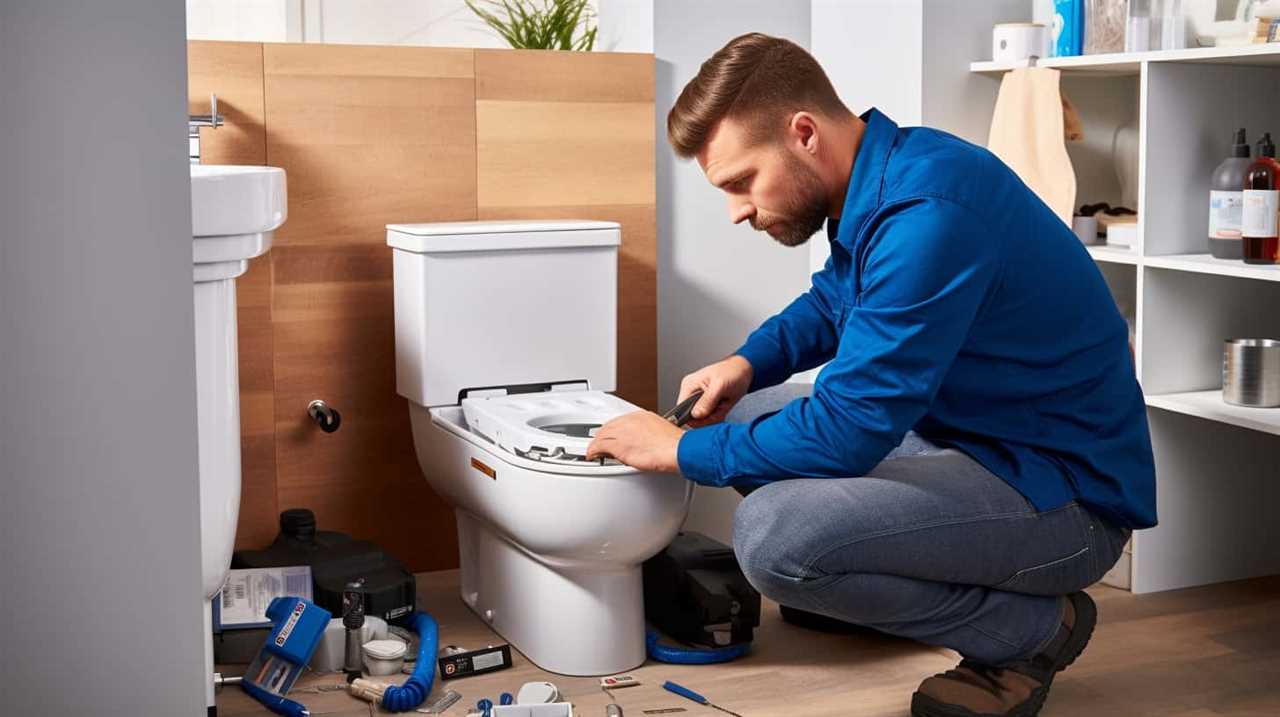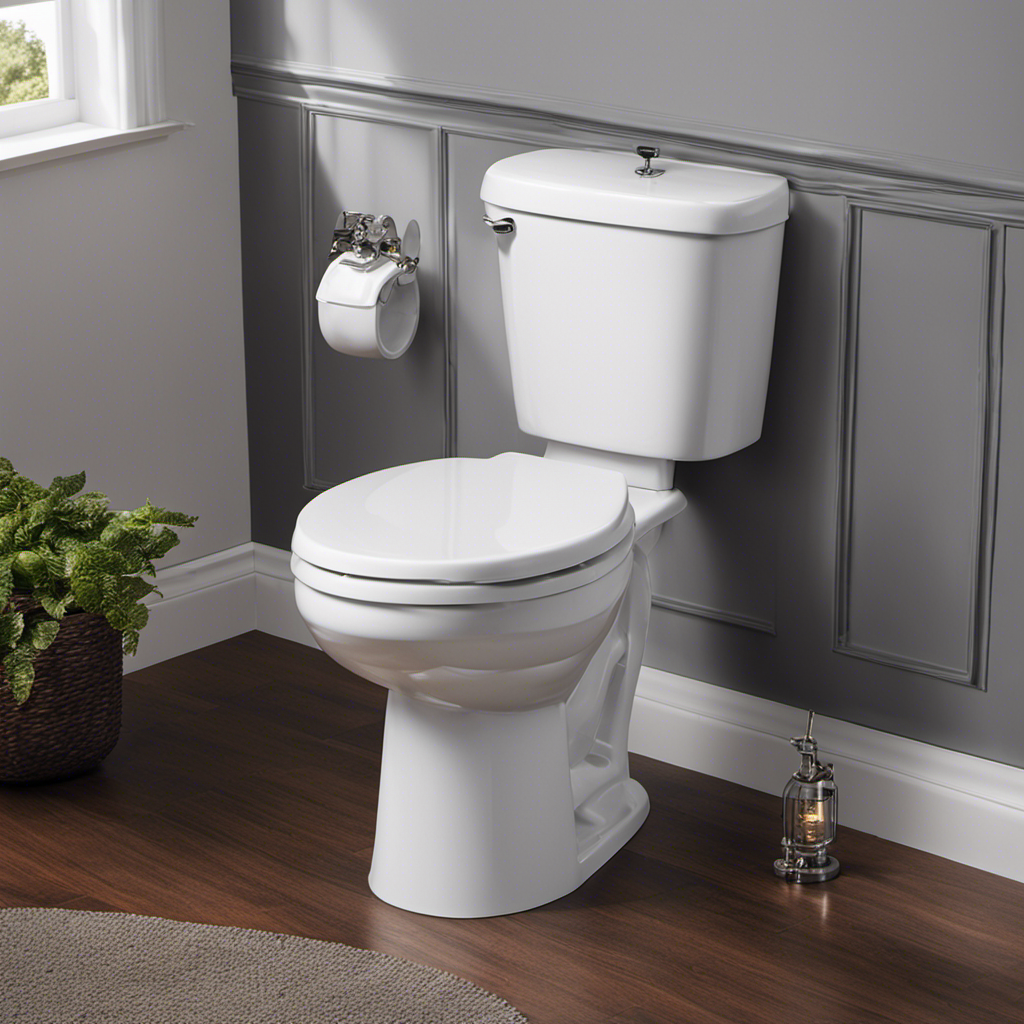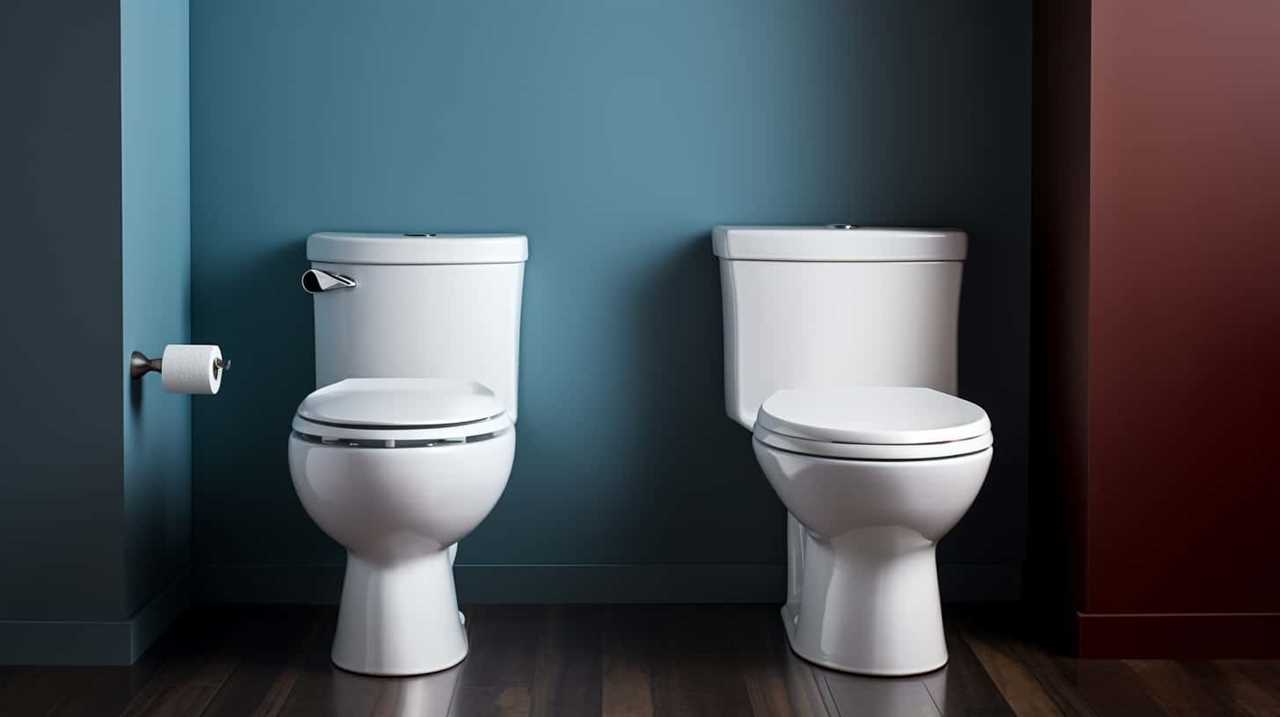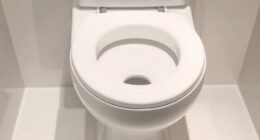- Potential risks of flushing other non flushable items down the toilet.
- The impact of disposable wipes on wastewater treatment facilities and costs
We’ve all been there, standing in front of the toilet, disposable wipe in hand, wondering if it’s really safe to flush. But are these wipes truly flushable?
In this article, we’ll dive into the myth surrounding the flushability of disposable wipes and explore the problems they can cause when flushed.
We’ll also delve into the environmental impact of these wipes and provide proper disposal alternatives.
Get ready to uncover the truth about disposable wipes and make informed choices for a cleaner future.
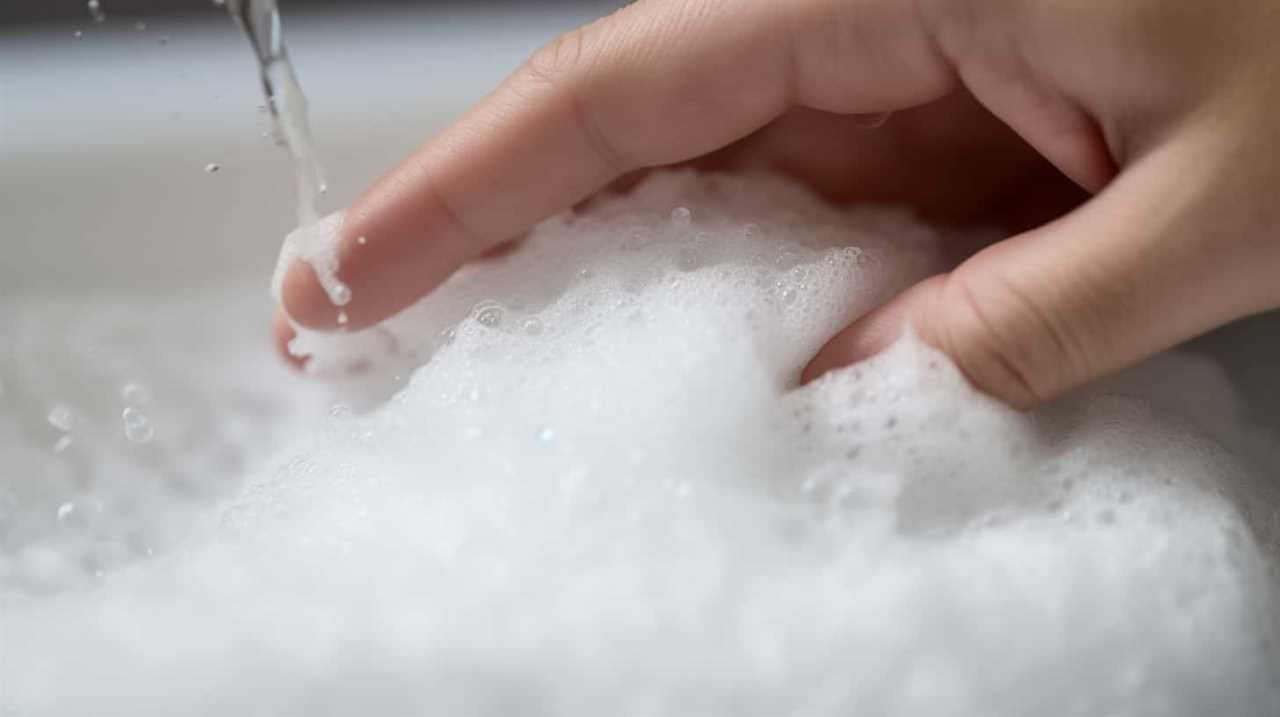
Key Takeaways
- Disposable wipes labeled as ‘flushable’ are not actually safe to flush down the toilet.
- Flushing wipes can cause clogs, blockages, and damage in wastewater treatment systems.
- Disposable wipes do not break down as easily as toilet paper and can lead to sewer blockages and water contamination.
- Proper disposal of disposable wipes in the trash is crucial to protect wastewater treatment systems and minimize environmental impact.
What Are Disposable Wipes
Disposable wipes are commonly used products that are frequently found in households for various cleaning purposes. These wipes are made through a manufacturing process that involves combining fibers, water, and other ingredients to create a soft and durable material. The manufacturing process ensures that the wipes are strong enough to withstand cleaning tasks while being gentle on surfaces.
Consumer usage patterns vary, but disposable wipes are often used for cleaning surfaces such as countertops, appliances, and bathroom fixtures. They’re also commonly used for personal hygiene, such as baby care and makeup removal. Some consumers even use them as an alternative to toilet paper.
It is important to note that while disposable wipes are convenient, their usage patterns can contribute to environmental concerns. Improper disposal of wipes, particularly flushing them down the toilet, can lead to clogged pipes and environmental pollution. Therefore, it’s crucial for consumers to be aware of proper disposal methods to minimize negative impacts.
The Flushability Myth
In our previous discussion on disposable wipes, we explored their various uses and the environmental concerns associated with their improper disposal; now, let’s delve into the flushability myth surrounding these products.
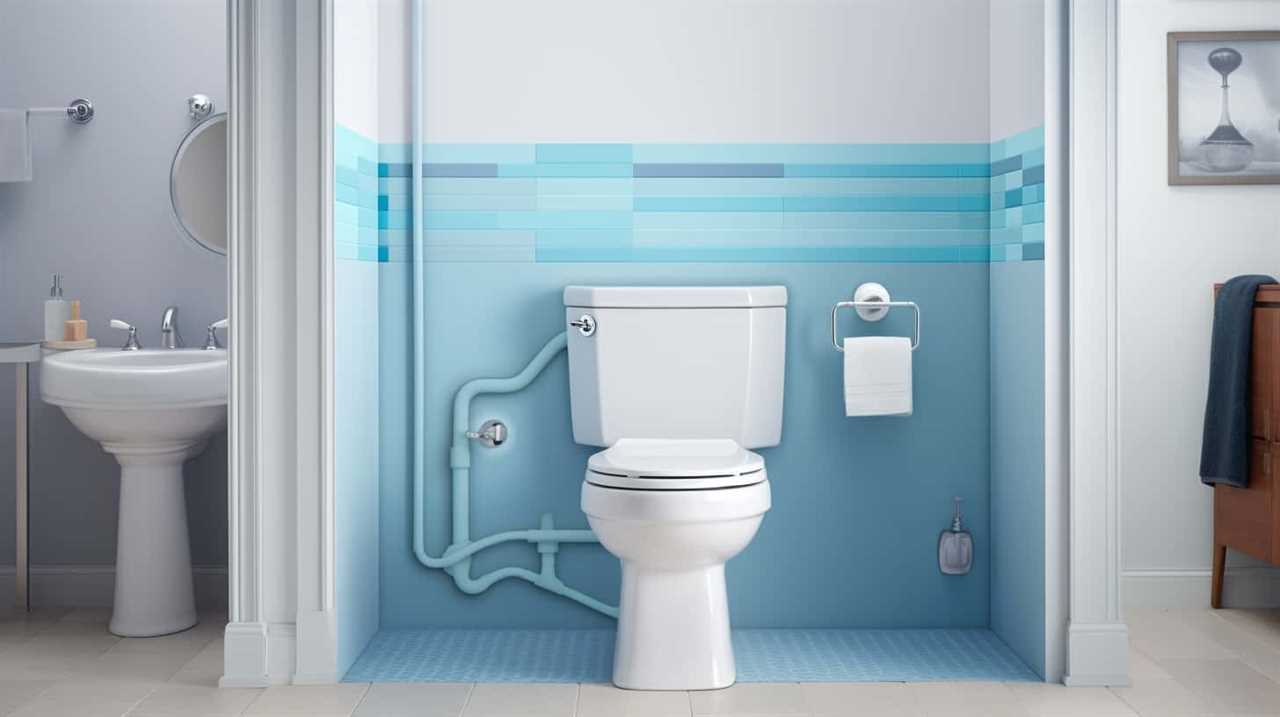
Many consumers believe that since these wipes are labeled as ‘flushable,’ they can be safely flushed down the toilet without causing any issues. However, this is a common misconception. The truth is that disposable wipes can cause significant problems in wastewater treatment systems.
Unlike toilet paper, which disintegrates quickly in water, wipes don’t break down as easily. They can clog pipes, create blockages, and damage equipment in wastewater treatment plants. Additionally, even if they make it through the sewer system, they can still cause problems in the environment, as they don’t biodegrade as quickly as toilet paper.
It’s important for consumers to understand that despite their labeling, disposable wipes aren’t truly flushable and should be disposed of in the trash to avoid wastewater treatment issues.
Problems Caused by Flushing Wipes
The problems caused by flushing wipes are numerous and can have detrimental effects on wastewater treatment systems. When wipes are flushed down the toilet, they can lead to sewer blockages and water contamination. These issues arise because most disposable wipes are not designed to disintegrate like toilet paper. Instead, they are made from materials that are more durable and resistant to breaking down in water. As a result, they can accumulate in sewer pipes, causing blockages and backups. Additionally, the presence of these non-biodegradable wipes in the wastewater can contaminate water sources and harm aquatic ecosystems. To illustrate the extent of the problem, here is a table summarizing some of the key issues caused by flushing wipes:

| Problems Caused by Flushing Wipes | Effects |
|---|---|
| Sewer blockages | – Backups and overflows |
- Increased maintenance and repair costs |
| Water contamination | – Polluted water sources - Harm to aquatic life and ecosystems |
To protect our wastewater treatment systems and prevent these problems, it is crucial to dispose of wipes properly in the trash rather than flushing them down the toilet.
Environmental Impact of Disposable Wipes
Our research reveals the concerning environmental impact of disposable wipes. While these wipes may be convenient for personal use, they pose a significant threat to our environment.
Unlike toilet paper, which breaks down easily in water, disposable wipes are made from materials that don’t disintegrate quickly. As a result, they can clog sewer systems and cause blockages in pipes, leading to costly repairs and maintenance.
Additionally, when flushed down the toilet, these wipes end up in wastewater treatment plants, where they can overwhelm the system and interfere with the treatment process. This not only increases the risk of sewage overflows but also adds to the burden on our already strained wastewater infrastructure.
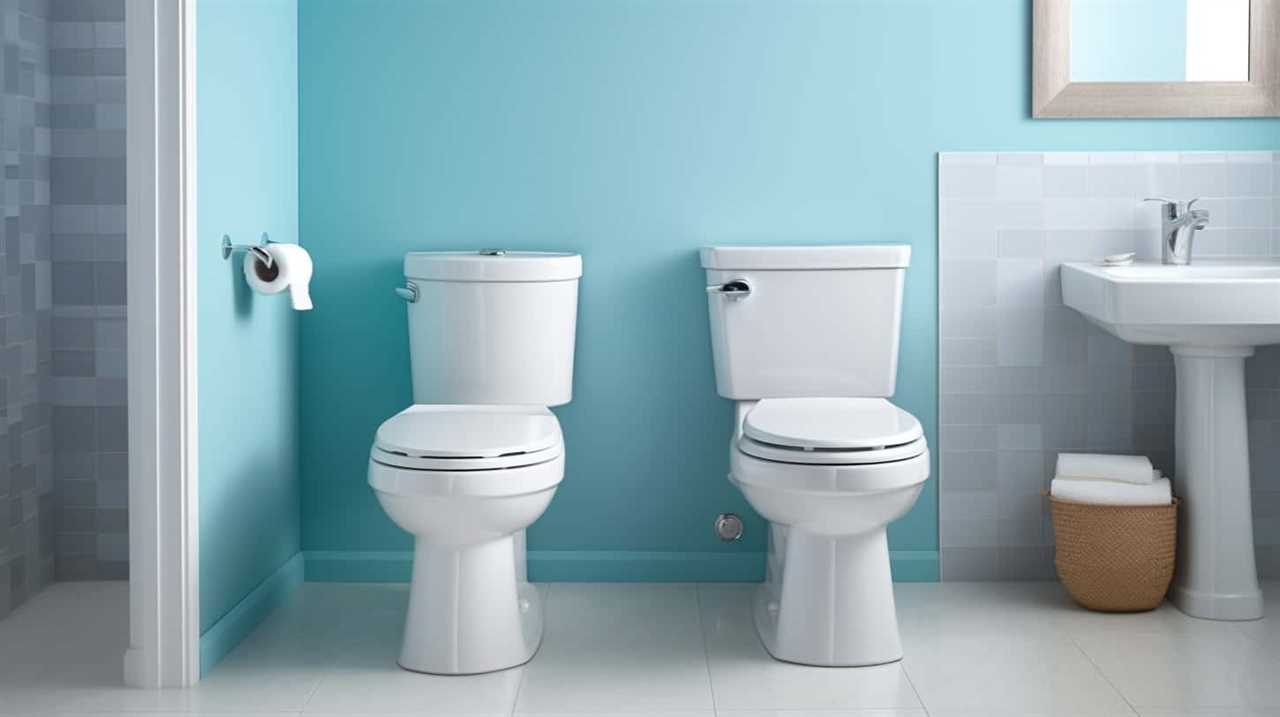
To address this issue, it’s crucial to promote the use of eco-friendly alternatives like biodegradable wipes or washable cloths, which have a minimal impact on wastewater treatment plants and the environment as a whole.
Proper Disposal Alternatives
To properly dispose of disposable wipes, we can consider using alternative methods that are more environmentally friendly.
There are several eco-friendly options available that can help reduce the negative impact of disposable wipes on the environment.
One option is to use reusable cloth wipes instead of disposable ones. These can be easily washed and reused, eliminating the need for single-use wipes.
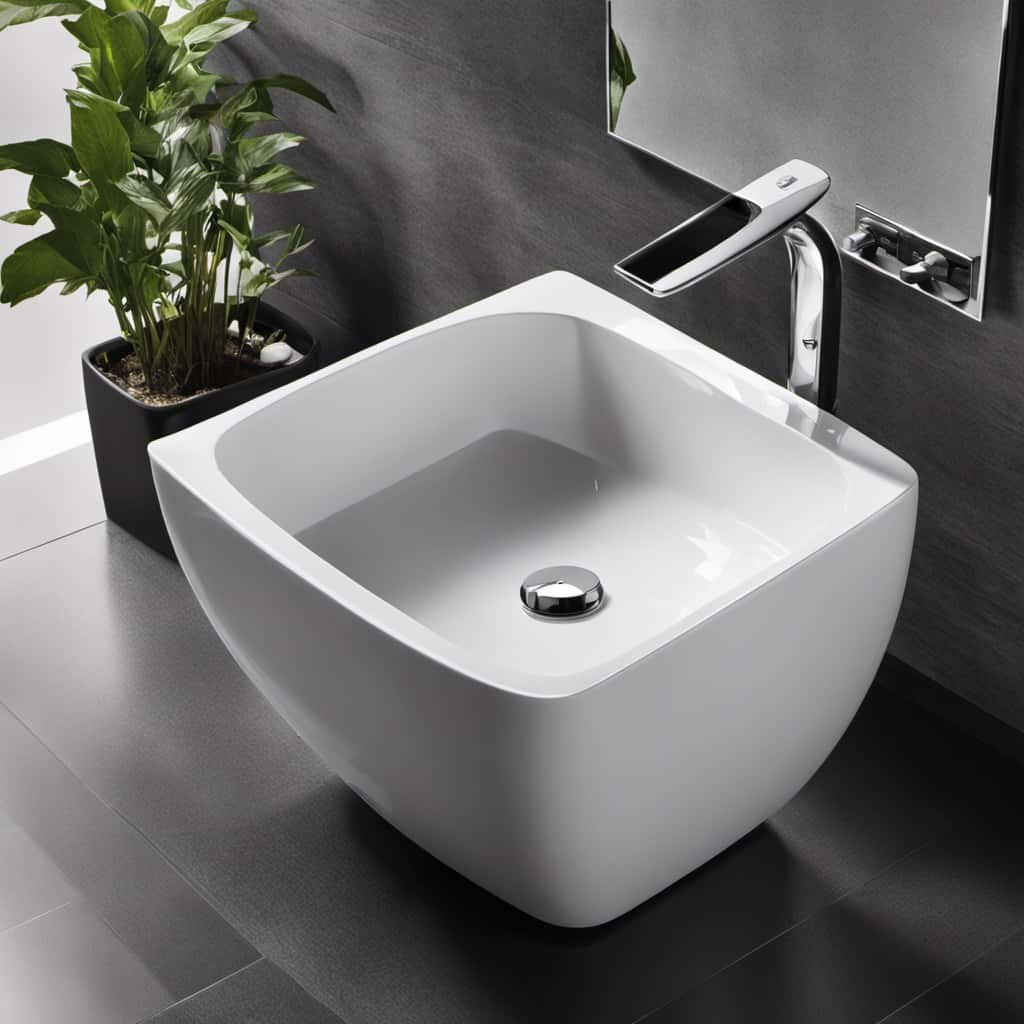
Another option is to opt for biodegradable wipes that are made from natural materials and break down more easily in the environment.
Additionally, some companies offer recycling programs for certain types of disposable wipes, allowing them to be repurposed instead of ending up in landfills.
Frequently Asked Questions
Are There Any Brands of Disposable Wipes That Are Actually Flushable?
There are alternative options to disposable wipes that claim to be flushable, but the environmental impact is a concern. It’s important to consider the evidence and make informed choices about what we flush.
Can Flushing Disposable Wipes Cause Damage to Plumbing Systems?
Flushing disposable wipes can cause damage to plumbing systems. The potential risks of flushing non-flushable items down the toilet should be considered. Additionally, disposable wipes can impact wastewater treatment facilities and increase costs.

How Long Does It Take for Disposable Wipes to Break Down in Wastewater Treatment Systems?
Disposable wipes take a long time to break down in wastewater treatment systems, which can lead to clogs and damage. Biodegradable alternatives exist, and proper disposal in landfill is recommended for non-flushable wipes.
Are There Any Regulations or Guidelines in Place Regarding the Labeling of Flushable Wipes?
Regulations and labeling guidelines exist for flushable wipes, ensuring accurate information for consumers. These guidelines help prevent misleading claims and promote responsible usage and disposal practices.
Are There Any Studies or Research Available on the Long-Term Effects of Flushing Disposable Wipes on the Environment?
There is limited research on the long-term effects of flushing disposable wipes on the environment. However, studies suggest that these wipes can contribute to microplastic pollution and have a negative ecological impact.
Conclusion
In conclusion, while disposable wipes may claim to be flushable, the truth is that they can cause significant problems when flushed down the toilet. Despite their convenience, these wipes can clog pipes and sewage systems, leading to costly repairs and environmental damage.
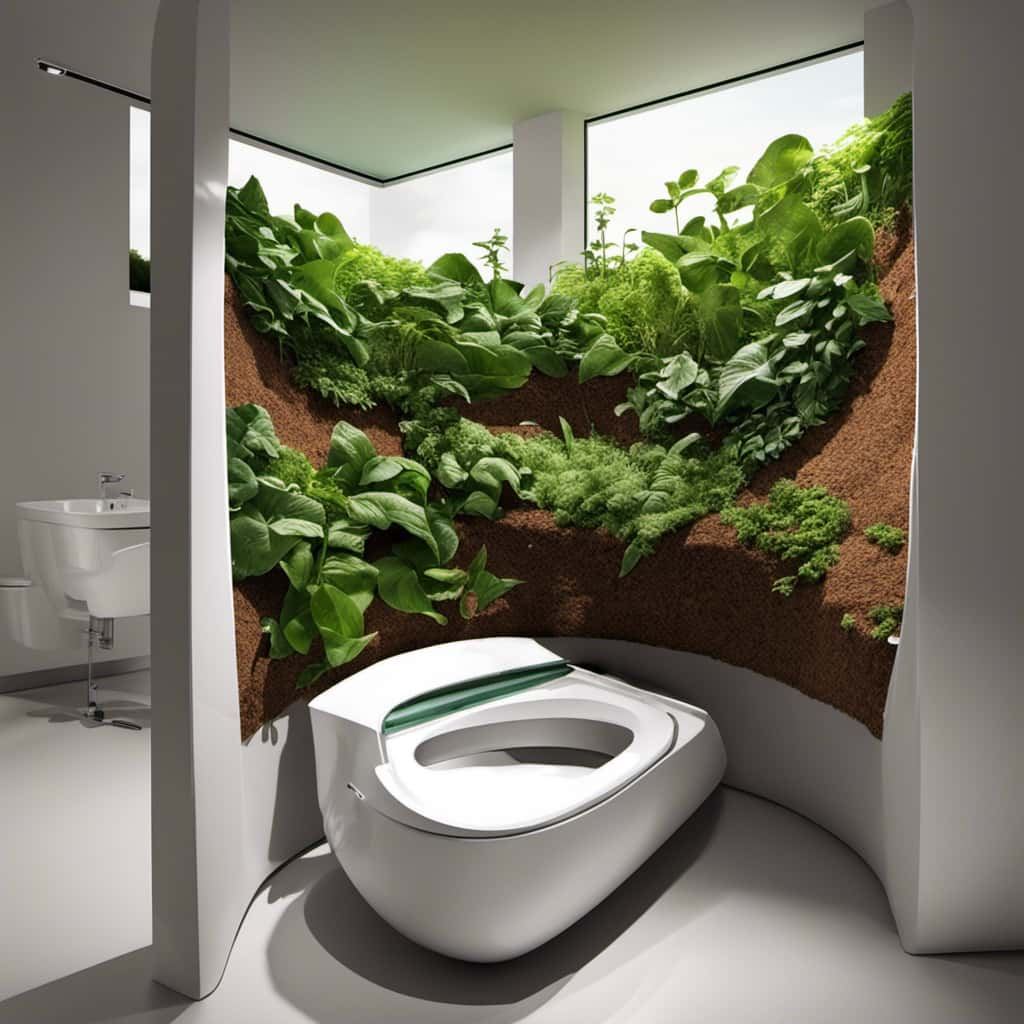
It’s important to dispose of these wipes properly in the trash to avoid these issues. By choosing alternative disposal methods, we can protect our plumbing systems and the environment for future generations.
